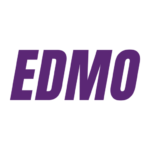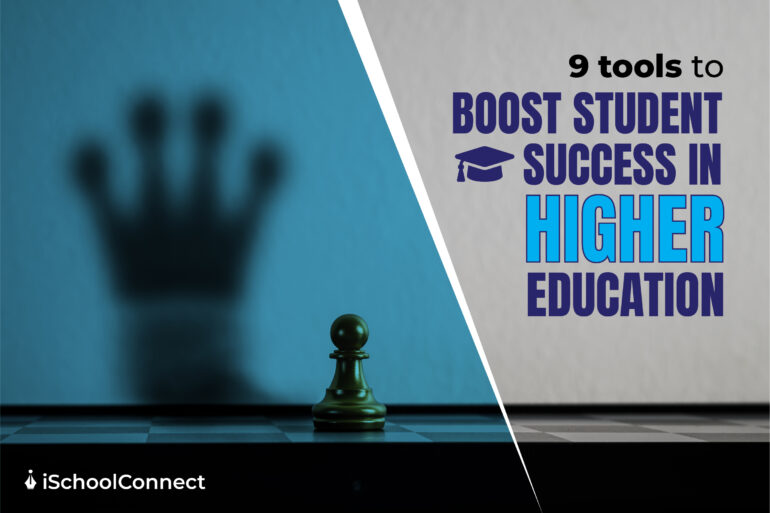Last Updated on December 18, 2024 by iSchoolConnect
With fully digitized classrooms over the internet, modern technology has fundamentally reshaped the education sector, making knowledge accessible to everyone. Technology has subordinated every element of the social order and is now and will remain the life and blood of modern society for the foreseeable future. The education industry has been the most impacted by technology developments across industries. Here are some tools and technologies that not only help students in their studies but also help them to succeed in their lives.
Introduction
Education is changing quicker than at any other time in modern history. Educators and families are becoming more conscious that today’s curriculum must develop to match the realities of tomorrow. Aside from tools and technology, students must learn new abilities to tackle difficult issues, cooperate successfully, and convey ideas in novel ways.
Here are some emerging trends in education that not only enhance the way students learn but also help them in getting success in life.
- Digital Responsibility: Parents and guardians want schools to help children establish healthy connections with technology and to be safe, confident digital explorers.
- Life Skills and Workforce Preparation: Students require a comprehensive education that incorporates practical vocational skills, communication methods, and leadership development to prepare them for future professions.
- Computational Thinking: A curriculum that emphasizes problem-solving, coding, and STEM disciplines helps pupils prepare for future issues.
- Student-led Learning: Educational authorities want students to have greater control over their education, from what they study to how the classroom works.
- Collaborative Classrooms: As schools emphasize openness, flexibility, and cooperation, classrooms are being redesigned to reflect this.
- Pedagogical Innovation: Motivated instructors have more engaged classrooms, and reducing administrative work allows them to devote more time to teaching.
- New Technology: To enable more innovative and engaging teaching techniques and learning experiences, schools are introducing emerging technologies into the classroom.
Three technologies for building a better future for your students
1. Access to great content
- We want education technology businesses to give us the information we need to upskill ourselves when we need it and at our convenience in the on-demand economy.
- While we may be able to download a new skill set in a matter of seconds in the future, as Neo did in the Matrix, the present technology is far from that.
- However, by searching online, it is now feasible to access, if not learn, the knowledge that is necessary for a new skill set in a matter of minutes (if not seconds).
- Recognizing this potential, platforms like LinkedIn have invested heavily in content repositories such as Lynda.com, which offers extensive resources to build technical skills ranging from video production to app and website development.
- Technology advancements that have resulted in the spread of the Internet (through online and mobile), an increase in bandwidth to accommodate video, and the availability of low-cost content recording and production tools have been chiefly responsible for providing access to amazing content.
- While it is feasible to search for and locate the material (both video and text), there is a big gap between seeing this content and acquiring new skills necessary for job readiness.
- Some extremely motivated and bright students may be able to utilize this knowledge and build new abilities, but the majority of students will struggle.
- Most experts now agree that exceptional learning outcomes require more than just material.
2. Access to great teachers
- Teachers that are gifted and inspirational help students learn new skills by planning and conducting courses and tests, offering appropriate feedback, and clearing concerns.
- Unfortunately, these professors are in short supply and are only available to the world’s greatest universities and a restricted group of students with the time and means to pay.
- MOOCs are being offered by EdTech businesses such as Coursera and Udacity as an alternative to direct access to professors by a) recording their classes and making them available online and b) having full-time faculty lead instructor-led courses.
- To a considerable extent, they have been extremely successful, making some of the top courses from universities such as Harvard, MIT, and Stanford taught by the best professors available to students all over the world for a fraction of the cost.
- While MOOCs have the capacity to scale exceptional professors and have done so to a considerable extent, learners find it challenging to engage with the course for lengthy periods.
- Low involvement leads to low completion rates, and as a result, many students do not acquire important skills.
- Because a single course can have tens of thousands of students enrolled, it becomes difficult to create an engaging learning environment in which students receive individual attention, personalized feedback, and the opportunity to interact with teachers and peers.
3. Technology enabled blended learning
- The teacher-to-student ratio is very low in most ideal learning environments, and students receive individual attention. In addition, students work in small peer groups on projects that simulate a real-world work environment.
- Faculty monitors assessments and progress and intervenes anytime a learning breakdown occurs.
- While this scenario works well in small groups, it is very hard to replicate in a totally online format for a large number of players.
- A third strategy for scaling “excellent instructors” is to have standardized courses (material and assessments) prepared by the top professors and delivered in small groups near the learners’ location by highly qualified practitioners.
- This would be supplemented by technology that delivers curriculum, tracks student involvement, and gives immediate feedback when students fall behind.
- In a mixed mode, providers seek to integrate the greatest elements of both an online and offline environment.
- Learners may access information, participate in conversations, and complete assessments online, or they can meet in small groups in a real place to study directly from an instructor.
- General Assembly is one such service that currently has standardized courses in 20 different locations and claims to have taught over 25,000 students.
- The General Assembly just acquired over $115 million in funding to further test this strategy.
Tools for building a better future for your students
1. Edmodo
- Edmodo is an Education Network that may be joined by instructors, students, and parents.
- Edmodo offers a digital classroom environment as well as other tools.
- At first glance, it appears to be similar to the social media networks we are familiar with, so you will instinctively grasp what, where, and how to join groups and communities and engage with other network members.
- Edmodo allows you to build a digital classroom where you may invite students and even begin issuing digital tasks.
2. Synth
- Podcasting allows students to develop speaking abilities that may be applied to future chances where public speaking may be required.
- We can provide more options for students to share their learning with the new tool Synth by providing a platform that goes beyond a standard podcasting application.
- Create a sequence of “Synths” that provide students with alternative explanations or guidelines to follow when completing an assignment or working on a project.
- It is beneficial for professors to post a discussion question for students to react to outside of the school day in order to provide a new topic of debate for the next session.
3. Wakelet
- For students who need to create a presentation that involves a variety of media formats and information, the idea of doing the research and putting everything together into a presentation tool could be time-consuming and possibly overwhelming for some.
- However, when using a tool like this, students can simply place or curate all of the resources for their project into one “Wake” and then share the link with their teacher, who can then create one class Wake where all the materials are accessible.
- It helps students to gather their information and to store it in one digital space and can also serve as a digital portfolio for students as they progress through school.
4. Sketchnoting
- It is not always about, as some students may not enjoy using technology to create a project, especially if they prefer creating something on their own.
- Sketchnoting has a lot of, especially for conveying a lot of information in a visually engaging way. Some students retain content better by creating a visual representation.
- Sketchnoting can be done with paper and markers, or it can be done using any of the apps available for creating a sketch note.
5. Blogging
- It offers students a comfortable way to write, share, read and learn.
- There are so many benefits of blogging, and sometimes the greatest benefits are those personal to each student.
- Blogging is a great way for students to develop the critical skills they need for learning today.
- It helps students to become more creative, to feel more confident in expressing their thoughts and ideas, and promotes authentic writing when students write with purpose.
- It can also help to further develop relationships by promoting collaborations between teachers and students and students with students when we read the blogs and provide feedback.
Conclusion
- The majority of today’s virtual learning environments allow for material delivery, participation in discussion forums, and the submission of quizzes and assignments online.
- Many platforms now provide the chance to participate in webinars and one-on-ones with teachers and peers.
- Significant progress has also been made in the creation of adaptive learning systems (e.g., Knewton) that enable individualized learning. These venues, while valuable, cannot replace a highly engaged classroom experience led by an inspired instructor.
- The majority are intended to be utilized by educators to enhance the classroom learning experience.
- There should be more opportunities for students to engage in more real-world activities, where they may analyze community needs and devise methods to provide services that will benefit others.
- Students who use any of these many forms to demonstrate their learning grow more adept not just at working alone and establishing confidence but also at collaborating with their classmates and working with people other than their instructor.
- We encourage digital citizenship and assist our students in developing their online presence and ethical use of digital technologies for learning.







